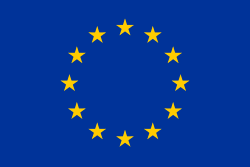Mugen Honda
| Hemvist | Japan |
|---|---|
| Aktivt | 1992 - 2000 |
| Biltillverkare | Footwork (1992-1993) Jordan (1998-2000) |
| Vunna lopp | 4 |
| Pole position | 1 |
| Snabbaste varv | 0 |
無限 Mugen, som betyder "utan gräns", tidigare benämnt Mugen Honda, numera ingående i M-TEC Co., Ltd, är en japansk motortillverkare. Numera håller företaget på med motortrimning och reservdelstillverkning för Honda men tillverkade tidigare även racingmotorer till olika formel 1-stall.
Historik
Mugen grundades 1973 av Hirotoshi Honda och Masao Kimura, som nu är företagets verkställande direktör. Hirotoshi Honda var son till Hondas grundare Soichiro Honda och blev efter faderns död 1991 majoritetsägare i Honda. Trots att grundaren av Mugen och ägaren av Honda var samma person var Mugen och Honda officiellt oberoende av varandra, men Honda bidrog med betydande teknisk assistans när det gällde F1-motorutvecklingen.
Footwork
Footwork körde med Mugen Honda-motorer säsongerna 1992 och 1993 och Footwork-Mugen Honda slutade då på sjunde respektive nionde plats i konstruktörs-VM.
Jordan
Jordan använde Mugen Honda-motorer säsongen 1998 och stallet tog en dubbelseger när Damon Hill vann före Ralf Schumacher i Belgien. Säsongen 1999 kom Jordan trea i konstruktörs-VM och Heinz-Harald Frentzen trea i förar-VM. Säsongen 2000 var en misslyckad säsong varefter Jordan bytte till Hondamotorer.
Ligier
Säsongen 1996 hade Ligier ett avtal med Mugen om att använda deras motorer. De var mycket kraftfulla och trots Ligiers begränsade budget så tog stallet flera pallplatser. Det blev till och med en seger genom Olivier Panis i Monaco.
Prost
Säsongen 1997 körde Prost med Mugen Honda-motorer.
F1-meriter
Segrar | Pole position |
Källor
Externa länkar
Media som används på denna webbplats
The civil ensign and flag of Belgium. It is identical to Image:Flag of Belgium.svg except that it has a 2:3 ratio, instead of 13:15.
The Flag of Europe is the flag and emblem of the European Union (EU) and Council of Europe (CoE). It consists of a circle of 12 golden (yellow) stars on a blue background. It was created in 1955 by the CoE and adopted by the EU, then the European Communities, in the 1980s.
The CoE and EU are distinct in membership and nature. The CoE is a 47-member international organisation dealing with human rights and rule of law, while the EU is a quasi-federal union of 27 states focused on economic integration and political cooperation. Today, the flag is mostly associated with the latter.
It was the intention of the CoE that the flag should come to represent Europe as a whole, and since its adoption the membership of the CoE covers nearly the entire continent. This is why the EU adopted the same flag. The flag has been used to represent Europe in sporting events and as a pro-democracy banner outside the Union.




